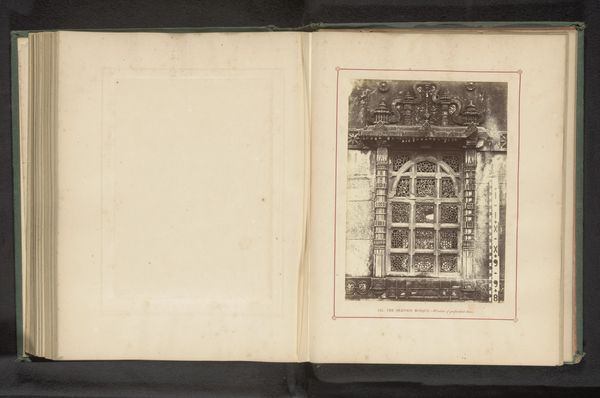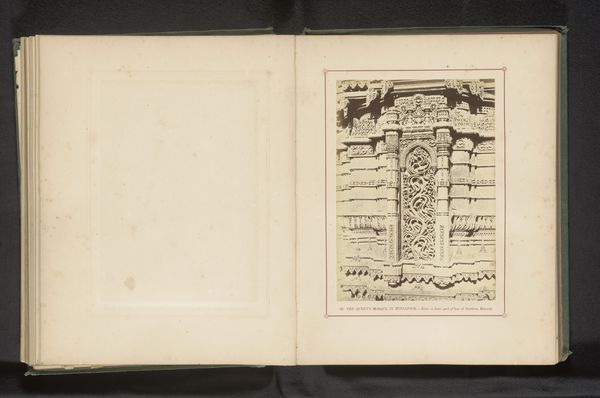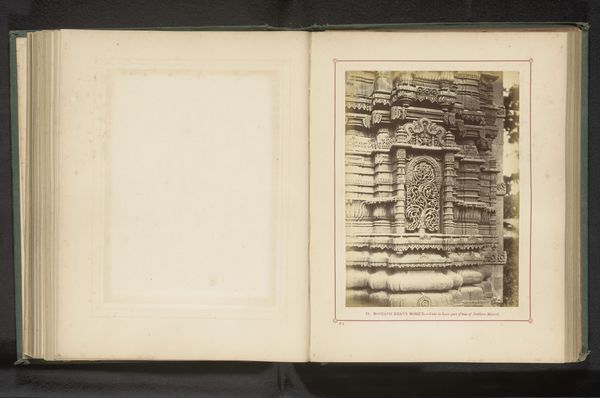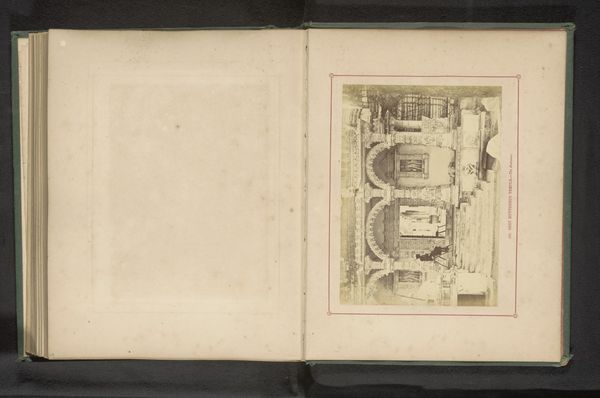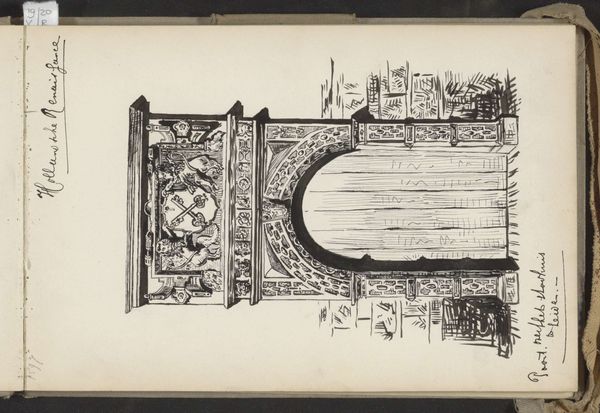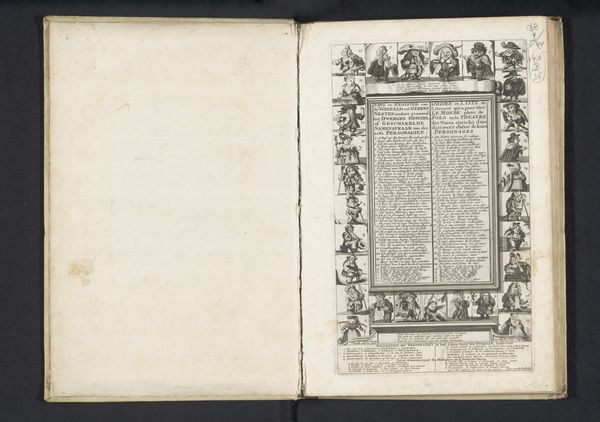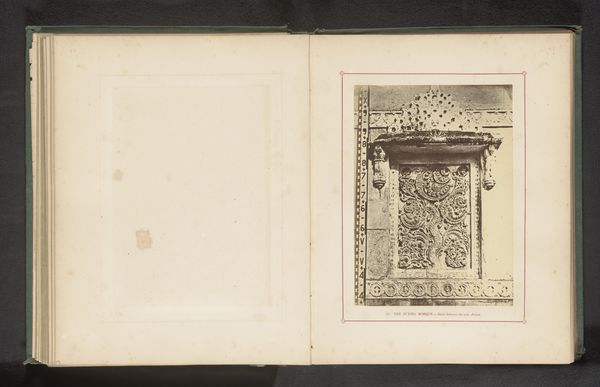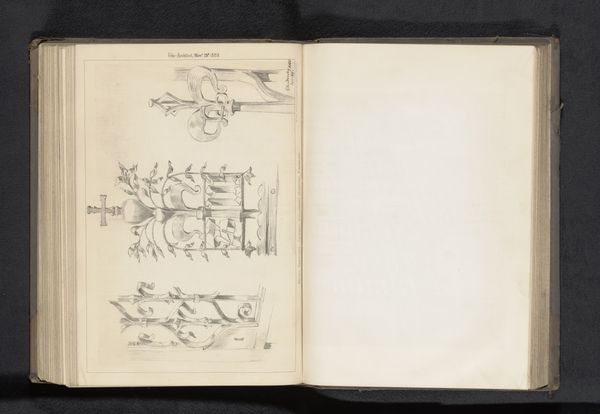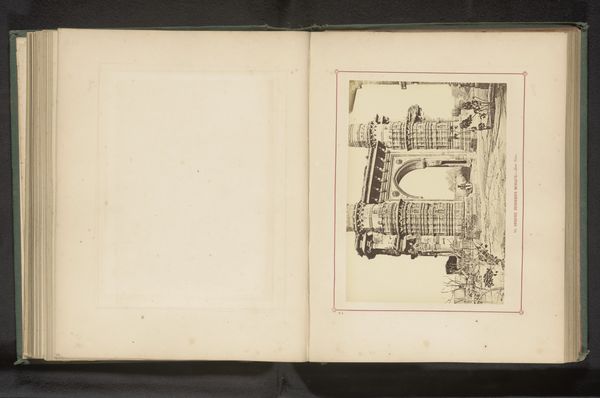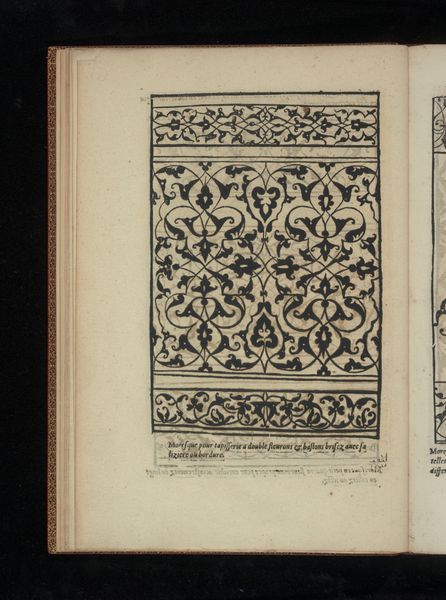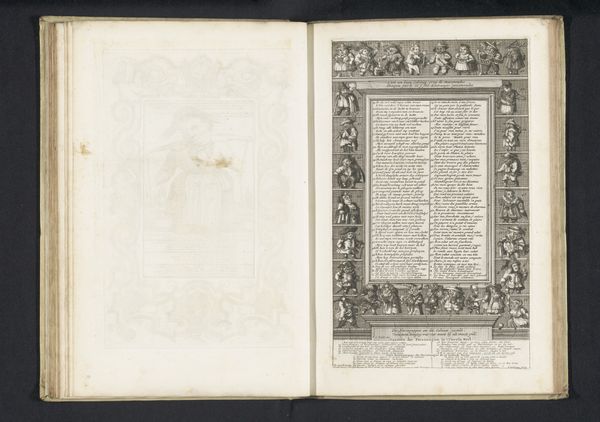
Decoraties op een basement van een minaret van de Shapoor-moskee in Ahmedabad before 1866
0:00
0:00
print, photography
# print
#
photography
#
geometric
#
cityscape
#
islamic-art
Dimensions: height 190 mm, width 136 mm
Copyright: Rijks Museum: Open Domain
Curator: Here we have an early photograph, dating from before 1866, titled "Decoraties op een basement van een minaret van de Shapoor-moskee in Ahmedabad," attributed to Thomas Biggs. Editor: What immediately strikes me is the intricacy. The geometric patterns are layered and complex. Even in monochrome, one senses an almost dizzying level of detail. Curator: Yes, the geometric forms are fascinating. One could spend quite some time deconstructing the formal relationships – the play of line, the balance between void and solid... The rhythm is mesmerizing, with each motif carefully arranged. Editor: I see more than mere arrangement. Islamic art, of course, famously utilizes geometric forms to symbolize the infinite and transcendent. The patterns here evoke a sense of unity underlying the apparent chaos of the material world. Look at the serpentine design; it almost feels like the symbol of infinity. Curator: Intriguing observation. Looking closely, I am compelled by the textural contrast. The smooth surface of the stone juxtaposed against the intricately carved design create a tactile tension – a key visual component of the artist’s strategy here. Editor: Absolutely. The photograph itself becomes an echo of that textural play – capturing both the permanence of the stone and the ephemeral nature of light and shadow. There’s a deep symbolism in depicting architecture dedicated to spiritual principles. Curator: I concur that the artistic tension creates a profound visual expression that demands meticulous reading and deconstruction of formal properties such as line, shadow, texture, and composition. Editor: And those formal choices powerfully convey meaning, allowing cultural memory and symbolic language to express spiritual ideas across different temporal and social frameworks. This is such an engaging representation of the intersection of the physical and the divine. Curator: I am taken, once more, with the beauty and formal rigor within the aesthetic organization of the components displayed, making for an emotionally powerful expression. Editor: And that expression is rooted in history and spiritual traditions we're fortunate to witness and share today.
Comments
No comments
Be the first to comment and join the conversation on the ultimate creative platform.
